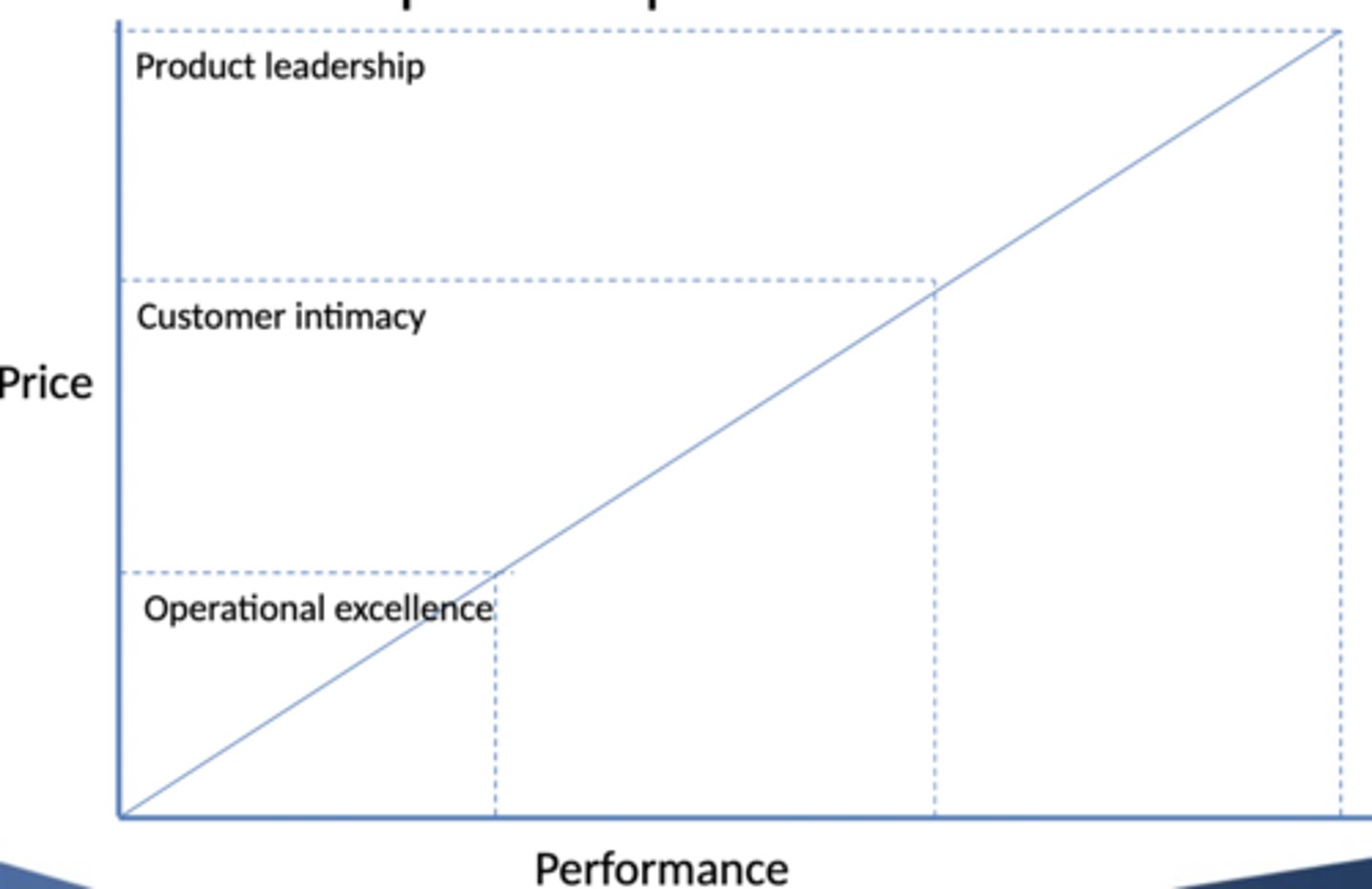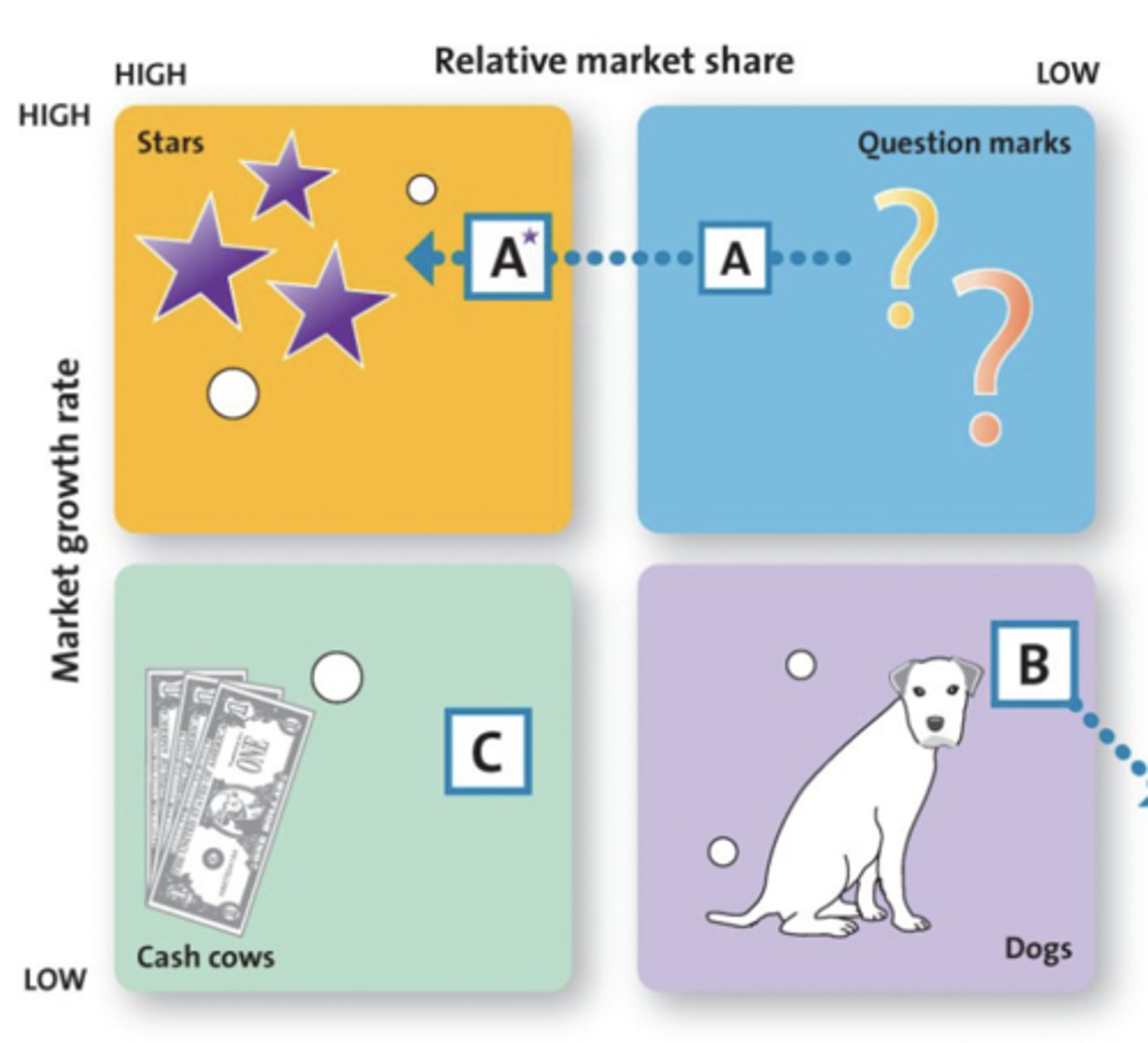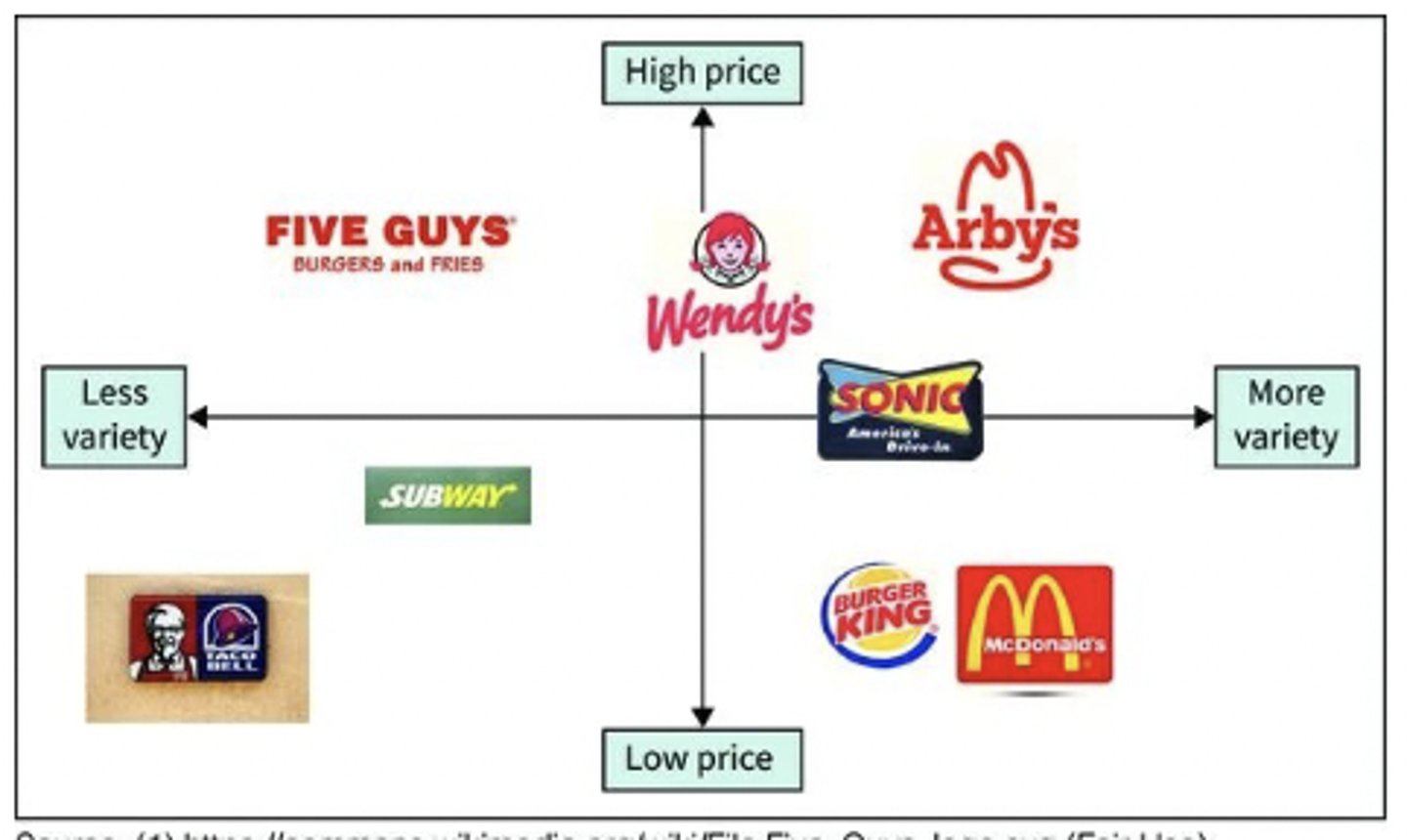MARK 3001 Exam 1
1/69
There's no tags or description
Looks like no tags are added yet.
Name | Mastery | Learn | Test | Matching | Spaced |
|---|
No study sessions yet.
70 Terms
marketing
the activity, set of institutions, and processes for creating, communicating, and exchanging offerings that have value for customers (at least 2 parties with something of value that want to deal and can accept or reject offers)
most important thing in marketing (marketing is...)
value
4 P's
product
price
place
promotion
product (4 P's)
goods = item you can physically touch
services = intangible benefits / experience
price (4 P's)
everything a buyer gives up in exchange for product
Ex. money, time, energy
place (4 P's)
getting the product to the right customer, supply chain
promotion
communicating a product's value to customers
transactional relationship
each transaction is a separate event, prior knowledge not important
Ex. McDonalds
relational relationship
buyers and sellers establish long term relationships
Ex. 5 star hotel
marketing strategy
a firms target market, marketing mix, and method of obtaining a sustainable competition advantage
sustainable competitive advantage
something that a company consistently can persistently do better than its competitors
3 Macro strategies for developing customer value
1. Operational excellence
2. Customer intimacy
3. Product leadership
operational excellence
focus on efficient operations and excellent supply chain management ( good enough )
customer intimacy
focus on retaining loyal customers and excellent customer service ( just right )
product leadership
focus on high quality products ( never good enough)
operational excellence goals
lower costs
increase convenience
obtain reliability
become easy to use
customer intimacy goals
customization
offer complete solutions
wide selection
advise and consult
create a feeling and experience
product leadership goals
high performance
linked with aesthetics
portray sophistication
operational excellence survival
volume strategy
"street fight" - dirty and ugly
customer intimacy survival
capture a customer
"boxing" - can get hurt but ref and gloves
product leadership survival
product development and always creating new product lifestyles
"fencing" - gentle and well protected
strategy map

identifying and evaluating opportunities
segmentation, targeting, positioning
SWOT analysis
Strengths - what your firm does well
Weaknesses - where you are vulnerable
Opportunities - possibilities not yet realized
Threats - cant control but must be aware
SWOT internal
strengths and weaknesses
SWOT external
opportunities and threats
market segment
consumers who respond similarly to a firms marketing efforts
target market
evaluating each segments attractiveness and deciding which to pursue
market positioning
process of defining the market mix variables (4 P's) so the target customers have a clear desirable understanding of what the product does / represents in comparison with competing products
identifying and evaluating opportunities
segmentation, targeting, positioning
segmentation
who will you target
targeting
how will you target them
positioning
where ( with consumers in mind )
Strategic Business Unit (SBU)
division of a firm that can be managed and operated independently from others with different objectives
Ex. LG produces washing machines, fridges, and TVs --> different product categories under one roof
BCG production portfolio
stars - products occur in high growth market rates and have high market shares
cash cows - occur in low growth market rates and have high market share
question marks - high growth market rates and have low market share
dogs - low growth market rates and low market share

growth strategies
market penetration
market development
product development
diversification
market penetration
employs existing marketing mix focused on existing customers
market development
employs existing marketing to reach new market segments
product development
new products / services to current target market
diversification
new products / services to new market segments
the immediate MICRO environment
company capabilities, competitors, suppliers / partners
company capabilities
how they achieve the 4 P's
where they are on the strategy map
SWOT analysis
competition
where they are on the strategy map
SWOT analysis
marketing myopia
define market so narrowly they miss opportunities to grow
short term goals over long term goals
demographics
characteristics of human population used to identify consumer markets
Ex. race, age, income, education, gender, location
4 generational cohorts
baby boomers
gen x
gen y - millennials
gen z
baby boomers
self-reliant, individualistic
shift away from luxury items spending patterns
lack of savings - work well beyond retirement
gen x
spending power
delaying marriage and purchase of first home
cynical, demand connivence
gen y - millennials
tech savvy
first digital natives
gen z
purchasing power
brand loyalty
media, fit in but unique
3 technological advances questions
1. the technology - is it ready?
2. the consumer - are they ready?
3. the firm - are we ready?
functional needs
pertain to the performance of a product or service
psychological needs
pertain to the personal gratification consumers associate with a product or service
internal searches
the buyer examines their own memory and knowledge about the product / service gathered through past experience
Ex. memories good and bad
external searches
buyer seeks knowledge outside their personal knowledge base to help them make the buying decisions
Ex. internet, reports, friends, family
evaluation levels
universal - all possible choices for a product category
retrieval - brands that readily come to memory
evoked - brands the consumer would actually consider buying from
compensatory decision rules
the consumer trades off one characteristic for another
-good ones compensate for the bad
non compensatory decision rules
selecting one product / service on the basis of one characteristic regardless of the others
Ex. brand loyalty, Ford vs. Chevy
decision heuristics
rules of thumb, mental shortcuts that help a consumer narrow down choices
Ex. price, brand, cheap, product presentation
cognitive dissonance
an uncomfortable state produced by an inconsistency between beliefs and behaviors that evokes a motivation to reduce the dissonance
Ex. buyers remorse
relieve cognitive dissonance by....
take back the item
only focus on the good qualities of the decision
seek positive feedback to justify the purchase
seek negative feedback on what you did not buy
reference groups
people/groups that a person uses as a basis of comparison
primary data
data collected to address specific research needs
-question then data
Ex. focus groups, interviews, surveys
secondary data
information collected prior to the start of the research project
-data then conclusion/question
Ex. US Census data, info gathered by brokers
5 segmentation methods
1. geographic = continent
2. demographic = age, gender, income
3. psychographic = lifestyle, self-concept, self values
4. geodemographic = urban, sophisticated town houses, retirees, bohemians, established
5. behavioral = occasion, loyalty
3 approaches to segmentation
1. micro marketing = 1 to 1 marketing
2. differentiated / multi-segmented marketing = different customers, different strategies
3. niche marketing = focus exclusively on one target market
5 ways to measure the effectiveness of market segmentation
identifiable = identify different groups and be able to distinguish between them
measurable = know how many customers are in each segment
substantial = must be large enough to meet a marketing objective
accessible = can i market to them and how will I connect with them
responsive = how will the customer respond to the marketing messages
IMSAR
2 ways to position a brand
1. the brand is the primary association with the category itself
Ex. Google, Kleenex, Band aid
2. the brand stands for a simple concept
Ex. Rembrandt - teeth whitening
close up - sex appeal
how to write a positioning statement for a brand
Brand is positioned as keep it simple
Ex. Godiva is positioned as luxury chocolate
perceptual map
displays in two or more dimensions the position of products/brands in the consumers mind
